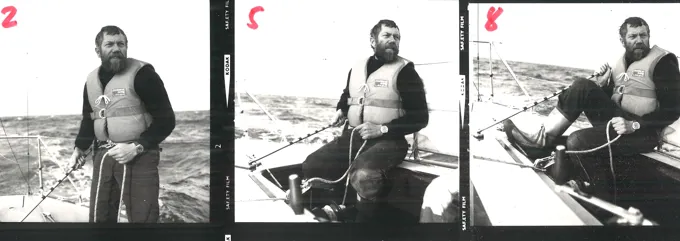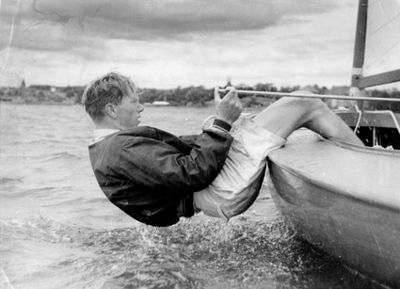

Paul Elvstrøm’s last name did not only become synonymous with sail production over the last seventy years – he was also the man behind a number of performance and indeed life-changing inventions in the sport.
His work was not only concentrated around performance, either. Elvstrøm came up with the self-bailer, the winchblock and so on, but here, we are going to focus on the subject of safety.
Admittedly, the life jacket was around and had been invented and put on the market by the early 50’s. It did on the other hand not catch on in competitive use, being too stiff and tended to hinder movement for the user.
Paul Elvstrøm writes in “Some reflections on the boyant capacity of life jackets” in January 1974 that he had his first life jacket made in 1952, but due to the above mentioned reasons, he soon switched back to sail without a life jacket or any other means of added buoyancy.
One event did however change his view, and Paul Elvstrøm set to work on new ideas for his own solution to the problem around life jackets and indeed their ability to function in competition use.
- One day in December 1956, I capsized with a 5-0-5 and I almost drowned in the incident. The cold water paralyzed my muscles and left my shoulders blue for weeks afterwards. I could barely get back up on the keel and then back in the dinghy – I had to lay down in it, and I shouted to my friend – he was still in the water – that he had to climb up as I was unable to help him, Paul Elvstrøm wrote.
The rather dangerous situation was a signal for him. A life jacket – even with a limited amount of buoyancy – would have made a world of difference in this situation.

Cooperation
Paul Elvstrøm set to work on the case and found a companion in the shape of Oilskind & Standard – later Imak-Helly Hansen. Together, they made lots of different solutions to the problem - and tested them thoroughly.
The final compromise was a swim vest which gave the user seven kilos of added buoyancy. It also fixed another urgent issue as this vest had an equal thickness on the front and the back. This was not the case earlier on, which led to problems with the flexibility for the user.
These were the solutions which made the first Elvstrøm Vest.
The sides were joined by string and a knot on each side, but this system was later upgraded to a zip-lock and then later again the belt-type design we know today. A belt around the waist of the bearer and a strap to keep the person inside the life jacket.
Elvstrøm did however have a hard time getting approval for the vest.
Statens Skibstilsyn was the only authority for maritime safety equipment at the time, and they didn’t see equipment for yachtsmen as a part of their scope.
Yet, as time progressed, the concept did gain its approvals as the authorities started to distinguish between life jackets and swim vests – and the rest is history.